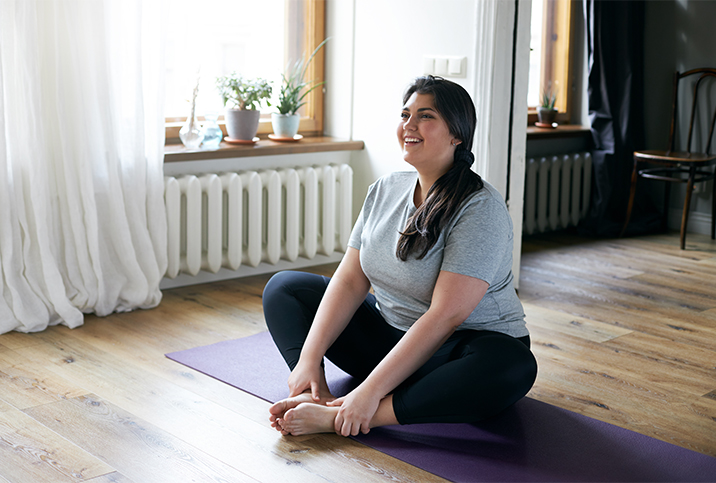Multiple Treatment Options Are Available for Vaginismus

Vaginismus is a persistent or recurring condition where the vaginal muscles involuntarily contract and tighten when penetration is attempted. It can make any penetration, from intercourse to using a tampon or getting a sexual health checkup, painful or impossible.
What causes vaginismus?
The exact cause of vaginismus is still unknown. Experts think it might be caused by psychological trauma due to past physical or sexual abuse, coexisting anxiety disorders or growing up with misinformation about sex.
As a psychosomatic condition, treatment options for vaginismus include a psychological and physical approach.
What is the treatment for vaginismus?
This health condition is fairly misunderstood. Some women don't feel comfortable talking to their doctors about their symptoms, making diagnosis and treatment all the more challenging but not impossible.
Vaginismus is treatable, but there's no quick fix. Curing vaginismus isn't as cut-and-dried as resolving a yeast infection. It usually involves a multidisciplinary approach that involves a combination of therapy, pelvic floor exercises, vaginal dilators and sometimes medications.
"There are many treatments that can help women with vaginismus," said Leila Frodsham, M.B.Ch.B., an OB-GYN and spokesperson for the Royal College of Obstetricians & Gynaecologists in the United Kingdom.
"We would encourage anyone who is experiencing symptoms of vaginismus to contact their doctor and ask to be referred to a specialist. If undiagnosed or untreated, women may continue to feel anxious or distressed, which can have a negative impact on their mental well-being and their relationships," Frodsham said.
"Exercises and treatment to help gain control of the vaginal muscles may include pelvic floor exercise, massage with fingers or a bullet vibrator that can really help to relax muscles," Frodsham added.
There isn't much evidence to determine if one treatment method is better than another. Vaginismus treatment is tailored to your symptoms, lifestyle and underlying causes.
"Vaginal trainers, which are tampon-shaped objects in different sizes, can gradually help women get used to having something put into the vagina. Pelvic floor physiotherapy can also be extremely helpful," Frodsham said.
The key is to help the patient feel safe and learn to relax.
Talk therapy
Therapy and counseling can help you understand and overcome the underlying issues that led to vaginismus. Cognitive behavioral therapy (CBT) is one such method.
CBT is talk therapy to show how your thoughts affect your emotions and behaviors. In the case of vaginismus, CBT might help you unpack your fear of penetration.
Psychosexual therapy, a therapy focusing on sexual issues, is another possibility.
"Psychosexual therapists are trained to look at the mind and the body in their approach to treating vaginismus," Frodsham explained. "Treatment is initially done under the guidance of specialist therapists who will help to manage a woman's feelings around penetration and help to ease any fear, and exercise techniques to allow the muscles to relax.”
Some people believe hypnotherapy is an effective vaginismus treatment in combination with other methods, but more research is needed.
Pelvic floor exercises
Vaginismus causes your pelvic floor muscles to automatically and involuntarily tighten, contract and spasm whenever penetration is attempted. One line of treatment for vaginismus is pelvic floor physiotherapy or Kegel exercises.
The goal of pelvic floor physio is to teach you how to relax and contract your vaginal muscles to regain control of your pelvic floor. This approach can be especially helpful when vaginismus develops as a result of childbirth trauma or a pelvic floor injury.
Vaginal dilators
Vaginal dilators are conical-shaped devices sometimes used to increase your comfort with penetration. There are several different types of vaginal dilators available and they often come in hard plastic or medical-grade silicone.
Someone suffering from vaginismus typically starts with the smaller size, which measures around 4 inches, and gradually increases the size until penetration is no longer painful or uncomfortable. Although you can buy vaginal dilators, they should be used under the supervision of a doctor or pelvic floor physiotherapist as part of a tailored program.
Botox
Some research suggests botox can treat vaginismus. Although you might know of Botox as a vanity wrinkle-smoother, the injection is used for several chronic pain conditions, such as jaw pain (TMJ) and tension headaches.
Botox, the commercial name for botulinum toxin, paralyzes the muscles and prevents them from contracting. Some studies have suggested that Botox can improve the symptoms of vaginismus by helping the vaginal muscles relax and not spasm.
A Botox injection occurs in the bulbospongiosus muscle. This muscle wraps around the vagina, allowing for pain-free penetration. It's worth noting, however, that while Botox might help with unwanted muscle contractions, it doesn't treat the underlying causes of vaginismus.
Botox is not a standalone treatment and should be combined with therapy.
Medications
If your vaginismus is caused or accompanied by anxiety and depression, your doctor might prescribe medications, including antidepressants, anticonvulsants or anxiolytics.
Medication is typically used if you don't respond adequately to therapy alone and have high anxiety levels.
The bottom line
Vaginismus is curable. Due to the physiological and psychological components of this health condition, contact your doctor to begin treatment if you're experiencing the symptoms of vaginismus. Help is available.
Do you need a new doctor? Giddy Telehealth covers the full scope of medical needs. Use the simple online portal to browse hundreds of healthcare professionals. Many offer video consultations and same-day appointments.


















